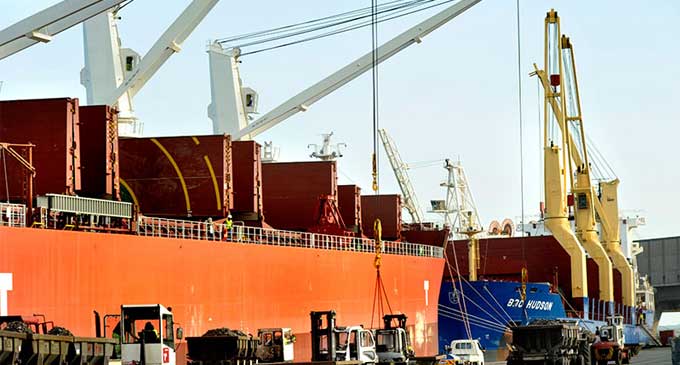Transnet sees 1.2 percent increase in revenue despite weak economy

Nov 09, 2016: South Africa’s state-owned freight and logistics company Transnet reported a steady rise in revenue and maintained profitability as the company continues with its infrastructure investment programme, despite depressed economic conditions, weak demand for commodities and manufactured products, which continued to hamper growth in volumes.
Revenue for the six months to September 30, 2016 rose 1.2 percent to R32.6 billion (2015: R32.2 billion), driven by a 12.8 percent increase in railed containers and automotive volumes and an increase in coal volumes of 1.8 percent. The increase in containers on rail confirms the success of the company’s road-to-rail drive, while at the same time validating the inroads Transnet has made in grabbing market share for rail-friendly cargo.
The logistics company spent R9.4 billion on its infrastructure investment programme despite the weak economy, taking overall spend on the Market Demand Strategy over the past five years to R133 billion. The bulk of the investment (R7.1 billion) was on sustaining capital and the remainder on new infrastructure and equipment.
Transnet’s key measure of profitability – earnings before interest, taxation, depreciation and amortisation (Ebitda), remained flat at R13.9 billion. As expected, and in line with the capital investment programme, profit from operations after depreciation and amortization decreased by 16.6 percent to R5.9 billion (2015: R7 billion). This is due to a 16.3 percent increase in depreciation, derecognition and amortisation of assets driven by capital investments and depreciation on the revalued port and pipelines assets. This trend is expected to continue in line with the execution of the infrastructure investment programme.
The company’s profits were dampened by R628 million in price reprieves to some of its key customers in distress, thereby saving thousands of jobs. Job preservation is a key element of the company’s mandate from its shareholder.
Operationally, coal volumes increased to 45.2 million tonnes (mt) (2015: 44.4mt) despite various operational challenges, including equipment failures, security challenges, community unrest, unfavourable weather conditions and adverse market conditions.
Manganese export volumes went up 7.5 percent to 5.7 mt from 5.3 mt previously, as commodity prices in that sector began to recover.
Transnet’s efforts to diversify sources of external revenue are gradually bearing fruit, with Transnet Engineering recording a 13.7 percent increase in external revenue to R688 million (2015: R605 million), including sales to the rest of Africa.
In addition, Transnet has appointed a chief operating officer to create a uniform operating culture and address operational challenges, while developing an integrated operating philosophy across its operating divisions.
Continued focus on operational improvements resulted in the Group operational efficiency increasing by 13.7 percent. At the ports, average moves per ship working hour - the primary measure of operational efficiency, reflected varied performance across the container terminals. The Ngqura Container Terminal increased productivity from 62 to 63 moves, while the Cape Town Container Terminal improved from 53 to 56 moves. However, operational and management challenges affected performance at the Durban Container Terminal – Pier 1 recorded 45 moves from 50, while Pier 2’s output declined from 62 to 55 moves. Lower market demand for refined fuel products resulted in a 4.1 percent decrease in petroleum volumes to 8 575 billion litres (2015: 8 940 billion litres). The decrease is in line with benign economic conditions.


